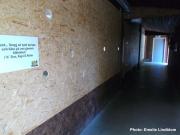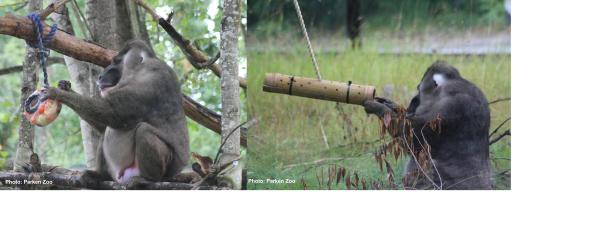Methods
Both of the projects in this study were conducted on three drills, one male and two females, at Parken Zoo in Eskilstuna, Sweden.
In both projects, rotating focal sampling method was used where each animal was observed in 5 minute -intervals. Each session went on for 30 minutes with six sessions during one observation day – three in the mornings and three in the afternoons. 1/0- sampling method was used when observing the behaviours of the drills with 1 minute-intervals.
With the limitation of only three individuals, descriptive statistics were used in both projects.
Visual barrier project

In this project, wooden square-boards were used as visual barriers. They were installed on the glass walls of the indoor enclosures. The behaviour of the drills was compared between a control condition (without visual barriers) and a barrier condition (with visual barriers installed). The data from the control condition was collected by another master student for an earlier study.
Visitor intensity, the sound level of visitors, was recorded continuously (the highest intensity level under each minute of observation was noted) and was ranked as low, medium and high.
Enrichment project
This project investigated any behavioural changes in the drills when being kept outdoors together with feeding enrichment (enrichment condition) compared to when having their ordinary indoor/outdoor access without added feeding enrichment (control condition). Five tube feeders (filled with seeds) and five frozen fruit were used as feeding enrichments each observation day. The food was taken from the animals’ daily allowance to prevent overfeeding.

Responsible for this page:
Director of undergraduate studies Biology
Last updated:
05/15/14
